Methods And Advantages

WE DO NOT HAVE ANY BRANCHES, FRANCHISES, MEDIATORS OR AGENTS.
Tissue- Cultured Teak
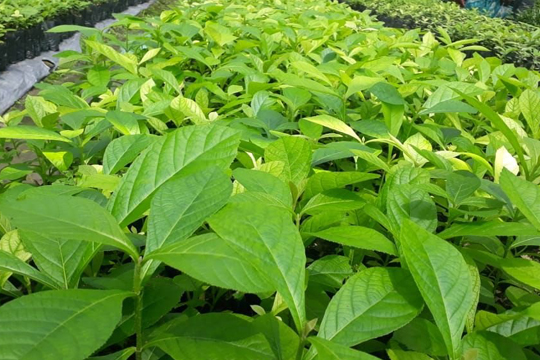

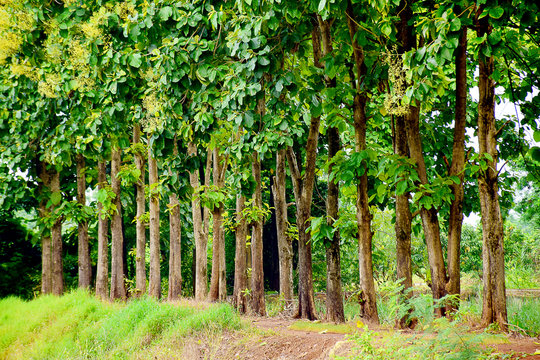
Description :
Process Of Tissue-Cultured Teak
How It’s Grown: Tissue-cultured teak involves taking tiny pieces of teak tissue and growing them in a lab under very controlled conditions. This method produces clone trees, all derived from a selected high-quality tree, ensuring consistent quality.
Quality: The trees are uniform in quality, growth rate, and appearance because they come from the same parent tree. The controlled lab environment reduces the chance of disease and pests.
Growth: Tissue-cultured teak often grows faster due to optimal conditions from the start. However, this method is more expensive because of the advanced technology and careful process involved.
Uses: It is primarily used in commercial plantations where high-quality, consistent wood is needed for applications such as furniture or construction.
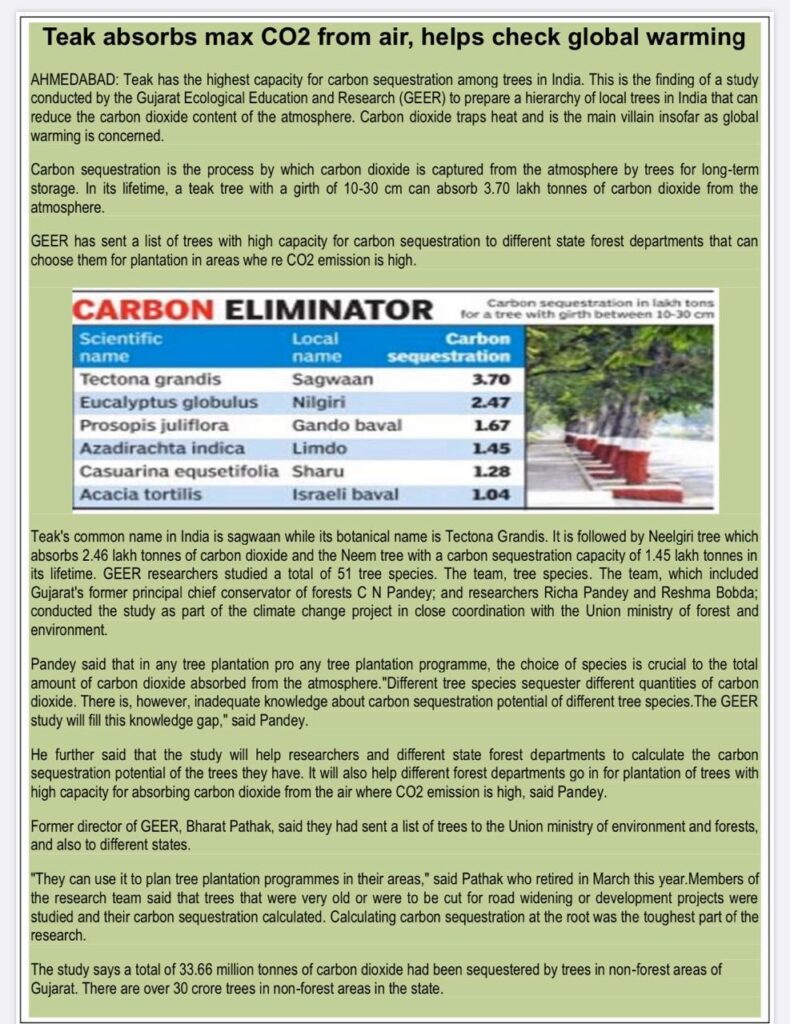
Stump/ Seedling Teak

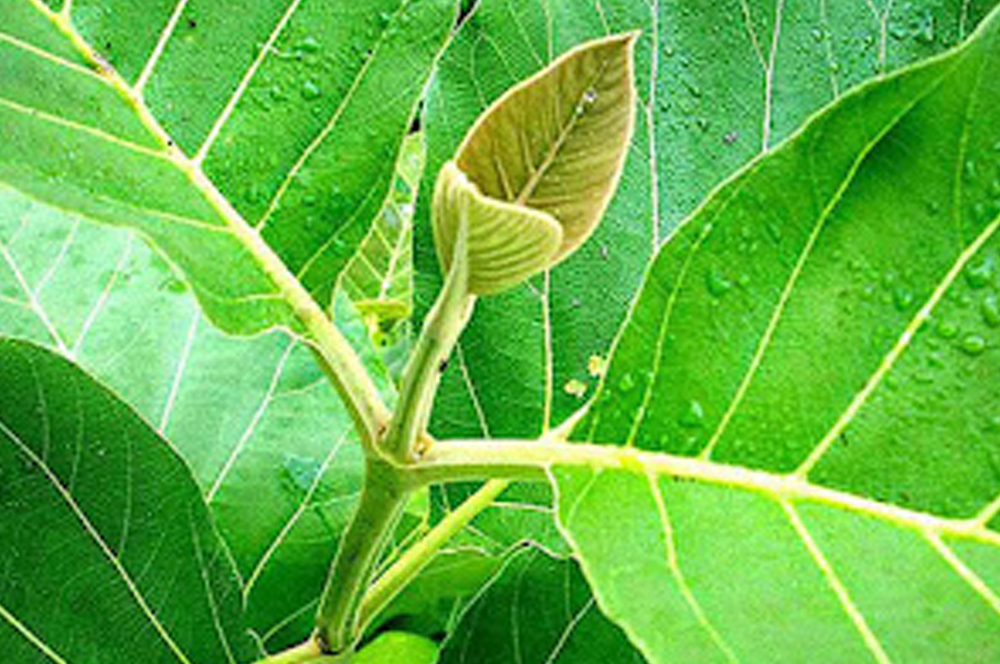
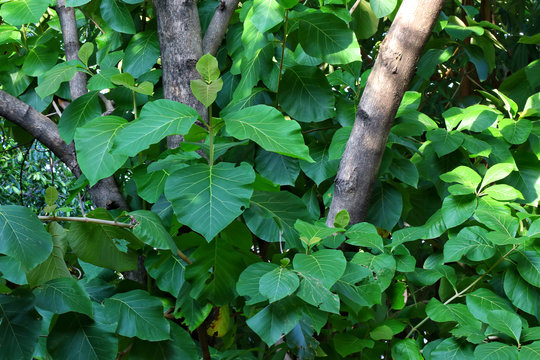
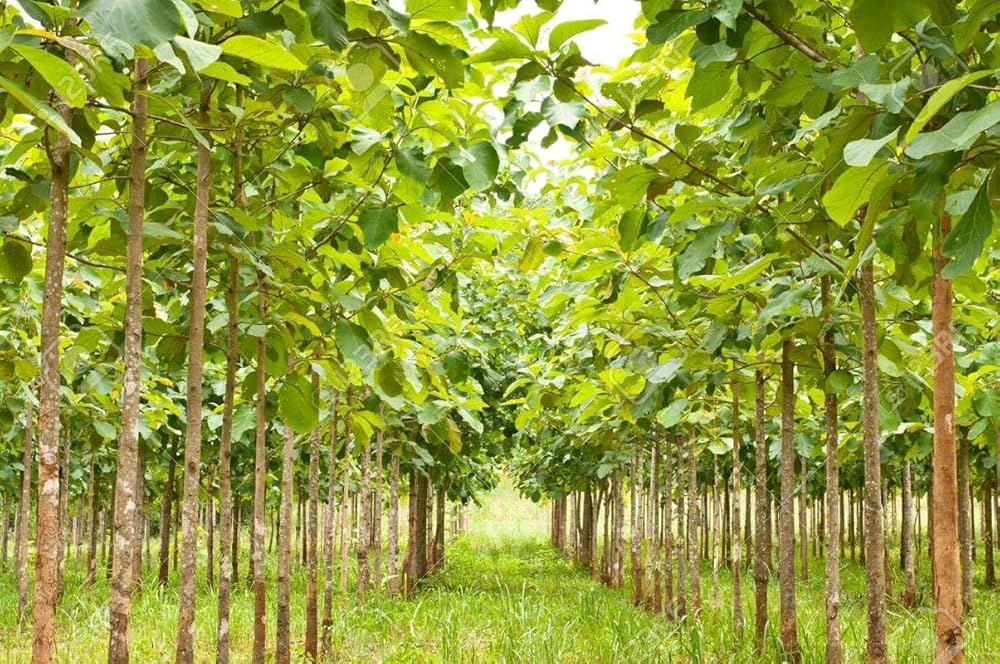
Description :
Process Of Stump / Seeding Teak
How It’s Grown: Stump/seedling teak is grown from seeds or by planting parts like stumps or cuttings of mature teak trees. Each tree may vary because they come from different parent trees.
Quality: The quality of stump/seedling teak can differ from tree to tree due to natural variation. There is a higher risk of disease and pests as they are grown in natural conditions.
Growth: Generally, these trees grow slower compared to tissue-cultured teak due to less controlled conditions. The cost is lower, reflecting the use of traditional growing methods.
Uses: This method is commonly used in general plantations where slight variations in wood quality are acceptable and cost-effectiveness is important.
Identification of teak




Identification Of
Tissue-Cultured Teak:
Uniformity: Grows consistently in height and shape due to controlled conditions.
Root System: Stronger, healthier roots.
Trunk and Foliage: Straighter trunks and uniform leaves.
Growth Rate: Grows faster and thicker.
Disease Resistance: More resistant to pests and diseases.
Labeling: Often includes documentation about its propagation.
Identification Of
Stump/Seedling Teak :
Variation: In Stump teaks Growth and appearance vary more due to genetic differences
Root System: Roots may be less uniform and can show stress within the teaks
Trunk and Foliage: Irregular trunks and varied leaves.
Growth Rate: Grows slower compared to tissue-cultured teak.
Disease Resistance: These Teaks havMore prone to pests and diseases.
Planting Conditions: Sensitive to soil and climate changes.
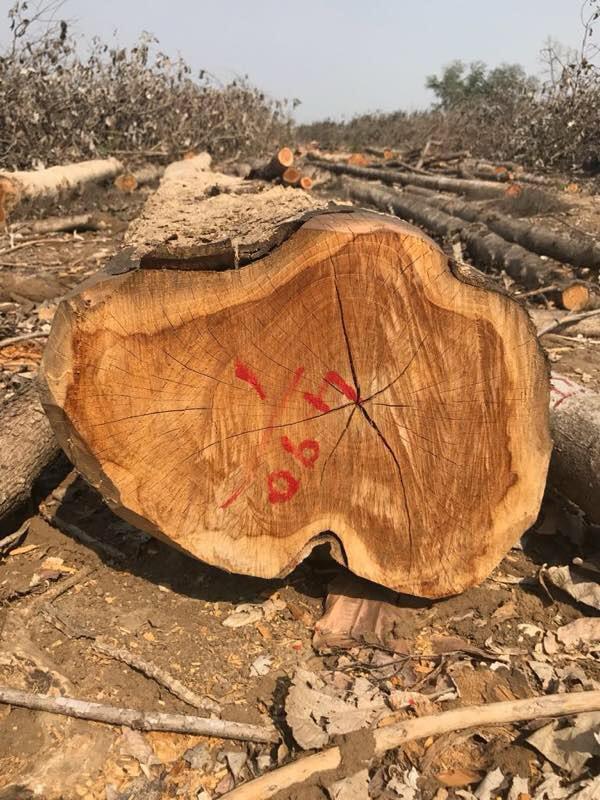
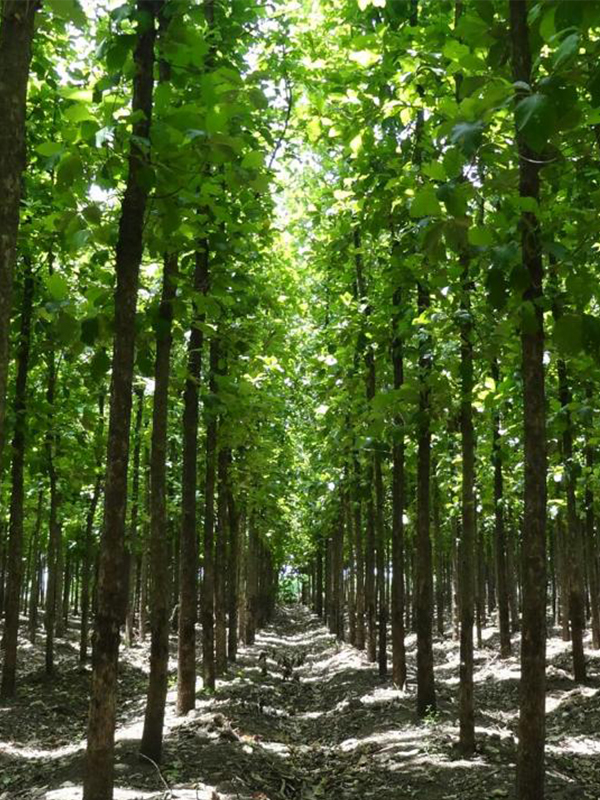
8-Year-Old MBT TC Teak Plantation in Nandigama (harvested)
The plantation features uniform growth, with trees reaching heights of 75-90 feet and girth of 75-110 cm. Tissue-cultured teak plants retain the exact characteristics of the mother plant, resulting in a non-flaky trunk and no branches. This uniformity in height and girth translates to excellent wood volume and quality.
The mother plant undergoes 60-point analysis to ensure disease and pest resistance, making the clones highly resilient. The teak trees are ready for harvest by the 8th year, offering high returns with a composition of 75% heartwood and 25% sapwood.
Additionally, when used as fencing, tissue-cultured teak can prevent up to 30% of wind damage to other crops due to its uniform growth. The plants can be cultivated throughout the year and provide significant returns on investment after 17 years.

8-Year-Old Stump-Planted Teak Plantation
In this plantation, stumps were planted simultaneously, resulting in trees with significant branching. The approximate height is 40 feet with a girth of 20-35 cm. Due to the varied characteristics of each stump, the trees exhibit many branches and a flaky trunk, which affects the wood’s volume and quality.
The stumps are not resistant to pests and diseases, leading to higher vulnerability. Harvesting takes between 25-50 years, and the yield consists of only 30% heartwood and 70% sapwood. The irregular growth pattern makes these trees inefficient as fencing plants.
Plantation is seasonal, and according to NABARD, the returns are projected to be 5 times the investment in 17 years.


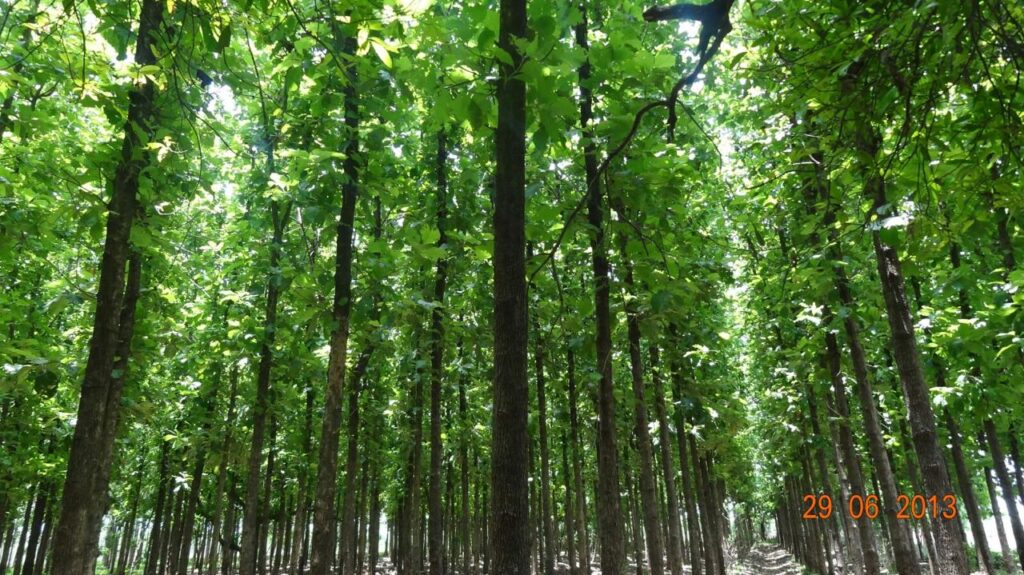

Advantages Of
MBT Tissue Cultured Teak
Uniform Growth: Consistent height, girth, and quality from cloned trees.
Faster Maturity: Harvestable in about 8 years.
Disease Resistance: Less prone to pests due to hugh quality clones
High-Quality Wood: Produces wood with 75% heartwood, enhancing value.
Flexible Planting: Can be planted year-round and acts as a windbreaker.
Lower Cost: Reasonably priced
Versatile Planting: Adaptable to various conditions, due to suitability of the clone
Natural Integration: Grows in natural conditions, supporting local ecosystems.
Returns: Yields significant returns after 8 years of planting.
Traditional Methods: Familiar and accessible cultivation techniques.
Advantages Of
Tissue-Cultured Teak:
Uniform Growth: Consistent height, girth, and quality from cloned trees.
Faster Maturity: Harvestable in about 8 years.
Disease Resistance: Less prone to pests due to lab-grown conditions.
High-Quality Wood: Produces wood with 75% heartwood, enhancing value.
Flexible Planting: Can be planted year-round and acts as a windbreak.
Advantages Of
Stump/Seedling Teak:
Lower Cost: Cheaper due to traditional growing methods.
Versatile Planting: Adaptable to various conditions, though seasonal.
Natural Integration: Grows in natural conditions, supporting local ecosystems.
Long-Term Returns: Yields significant returns over 25-50 years.
Traditional Methods: Familiar and accessible cultivation techniques.

